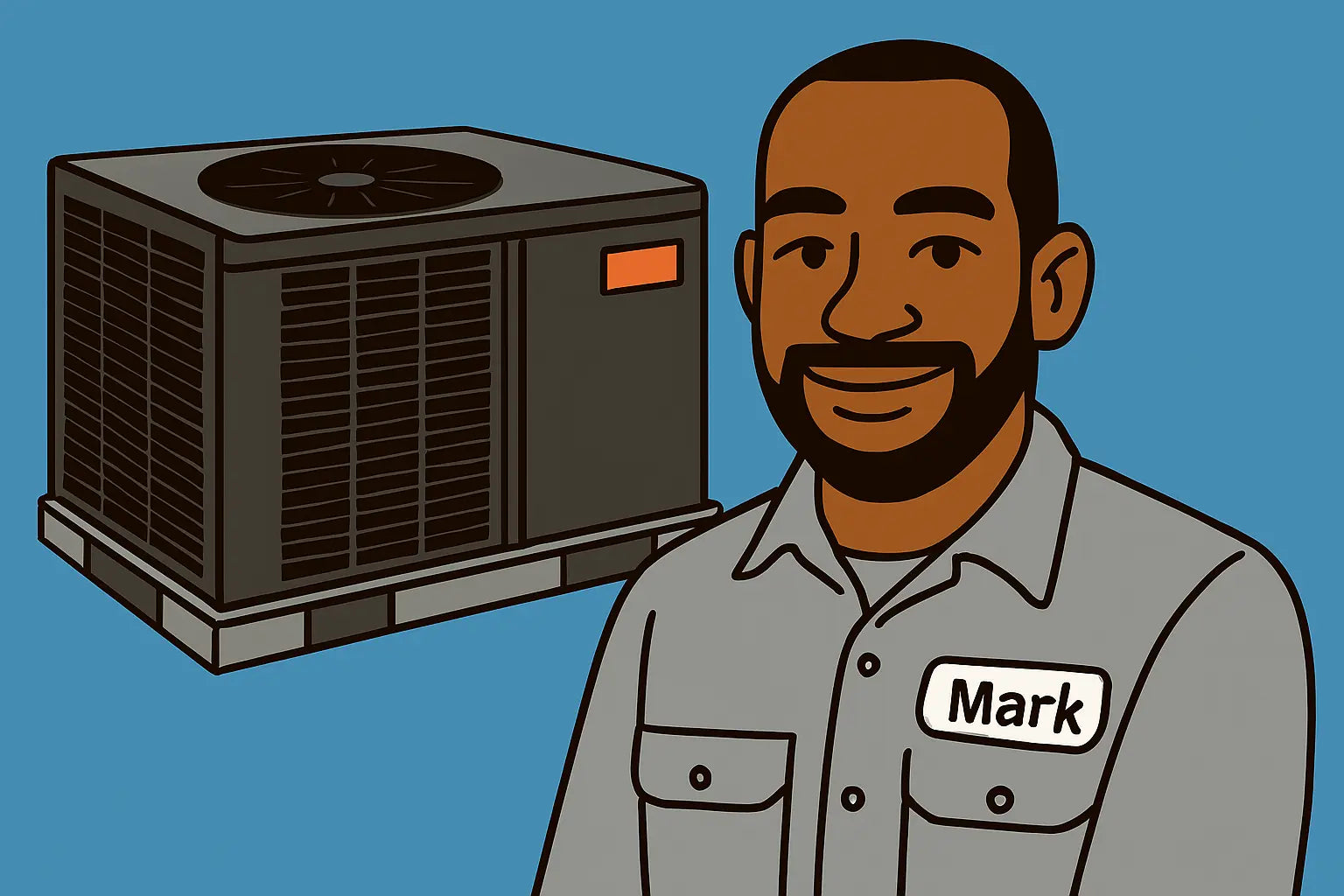Let's Get Started!
Hey, Mark here! If you’ve got your eyes on the Goodman GPCH33631 and you’re ready to roll up your sleeves, you’re in the right place. Installing a 3-ton horizontal air conditioner might sound intimidating, but with a little guidance, some elbow grease, and a few tips from me, you can get this unit up and running efficiently—without calling in a crew (though I’ll show you when a pro is the safer bet).
Understanding Your GPCH33631 Before Installation
Before picking up a wrench, it’s smart to know what you’re dealing with. The GPCH33631 is a 3-ton horizontal unit designed for residential use. It operates on 208/230V single-phase 60Hz and runs on R-32 refrigerant. This model delivers powerful cooling while maintaining energy efficiency, and it’s compatible with most standard ductwork setups.
For more info on R-32 refrigerant and its efficiency benefits, check out this guide from AHRI.
Step 1: Preparing Your Installation Area
Start by choosing a level, well-ventilated location for the unit. Clearance is critical—you’ll want at least two feet of space on all sides for proper airflow and maintenance access. Keep it away from direct sunlight, vents, and any obstructions that could reduce efficiency.
Mark Tip: I always recommend laying down a clean, sturdy base, whether it’s a concrete pad or a level platform. A stable surface prevents vibration issues and keeps the unit running quietly.
Step 2: Gathering Your Tools and Materials
Before diving in, make sure you have everything you need. Here’s the checklist:
-
Screwdrivers and adjustable wrenches
-
Level and measuring tape
-
Refrigerant lines and connectors
-
Electrical wiring and components
-
Condensate drain line
If you want a refresher on the right tools for HVAC installation, HVAC.com has a great guide.
Step 3: Positioning the GPCH33631
Carefully place the unit on your prepared surface. Double-check that it’s level using a bubble level or laser level. Even a slight tilt can interfere with drainage and reduce efficiency.
Make sure to leave enough room to access service panels and for air intake/exhaust. If you’re installing it in a tight space, measure twice to avoid post-installation headaches.
Step 4: Connecting Refrigerant Lines
The refrigerant lines are the arteries of your AC. Connect them carefully according to the Goodman manual, ensuring proper insulation and leak-free fittings.
Mark Tip: Avoid kinks in the lines—they restrict flow and can damage the compressor over time. For best practices on refrigerant handling, check out Energy.gov’s HVAC tips.
Step 5: Installing Electrical Wiring
Turn off the breaker before touching any wires. Connect the unit to your home’s electrical system according to local codes, ensuring proper grounding.
Mark Tip: Double-check connections and tighten any loose terminals. Electrical issues are a common cause of AC failure, and a little care upfront can save big headaches later. You can also review basic AC electrical safety at HVAC.com.
Step 6: Setting Up the Condensate Drain Line
Proper drainage keeps water from pooling inside or around the unit. Install the drain line with a downward slope, free of kinks or clogs. Run it to an appropriate drainage area, like a floor drain or condensate pump.
For a visual walkthrough, HomeServe has a helpful guide on AC drain lines.
Step 7: Testing Your System
Power up the unit and verify operation. Check that airflow is strong, temperatures are consistent, and there are no unusual sounds or vibrations. Inspect the refrigerant lines, electrical connections, and drain line for leaks or other issues.
Mark Tip: It’s always worth taking notes or photos during your first start-up. They’ll be handy if troubleshooting becomes necessary later.
Maintenance Tips for a Smooth Start
-
Replace or clean filters every 1-3 months
-
Keep coils free of debris and dirt
-
Ensure the area around the unit remains clear
-
Periodically check refrigerant levels for optimal cooling
Regular maintenance keeps your GPCH33631 running efficiently and prolongs its lifespan.
Wrap Up from Mark
Installing your Goodman GPCH33631 doesn’t have to feel overwhelming. With the right prep, tools, and attention to detail, you can have your 3-ton horizontal AC running smoothly and efficiently.
If you want to check the full specs or purchase your unit, visit the Goodman GPCH33631 product page. Following these steps will give your system a strong start and make future troubleshooting a breeze.
Need more advanced troubleshooting tips? Visit my guide: Keep Your Cool.
Stay cool,
Mark 😎







